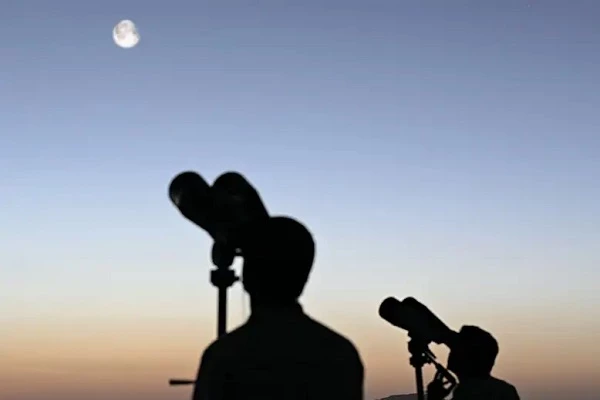Observe a lunar occultation of Uranus this month
Dolphins have the largest alliance network outside of humans, study finds / What is the optimal method of grouping students?
On September 14, astronomers will witness a lunar occultation of Uranus. In this rare occurrence, the planet will temporarily be obscured by the moon as it passes behind it in the sky. Approximately one hour later, it will reappear on the opposite side of the moon.
Due to the moon's proximity to Earth relative to the other celestial bodies visible in the night sky, its position relative to the stars and planets varies depending on your vantage point. This indicates that lunar occultations, in which the moon appears to pass in front of a planet, are only visible from particular regions of the globe. This occultation will be visible from Europe, northern Africa, and northwestern Asia.

To determine precisely when to look, it is best to use software such as Stellarium to examine what the night sky will look like in your location on September 14 evening. The occultation will be visible from the United Kingdom at approximately 10.30pm, but you should begin looking around 10.15pm. Before 11.30pm, Uranus will reappear on the opposite side of the moon.
To observe this event, you will require a sky free of light pollution and binoculars. Look for a small, fuzzy dot of light to the left of the moon, next to the sunlit portion of the moon, which will be 80 percent visible. The tiny dot may appear greenish-blue and more like a disc than a point of light when viewed through binoculars. Then, simply observe for the next hour as Uranus passes behind the moon and reappears on the moon's unlit side.
Uranus is the seventh planet from the sun and is occasionally visible with the naked eye from sufficiently dark locations. Use a pair of binoculars to ensure you will see it pass behind the moon, however.
Due to the presence of methane in their atmospheres, both Uranus and Neptune appear blue, but Uranus has a hazy layer that appears white-ish, dulling its hue in comparison to Neptune. Both are ice giants, but Neptune is never visible to the naked eye because it is so far away.
Don't worry if you don't have clear skies this time around. On December 5, western Europe will have another opportunity to observe a lunar occultation of Uranus. If you aren't in that part of the world, you may be able to witness another lunar occultation of Uranus on October 12 from much of the United States, Canada, and Greenland, or on November 8 from much of east Asia and Alaska.
This year, residents of Australia and New Zealand will be unable to witness an occultation. In 2023, however, parts of Australia will experience a total solar eclipse, so it's not all bad news.
What you require:
Binoculars or a telescope
Dark skies
Software like Stellarium (optional)
End of content
Không có tin nào tiếp theo
